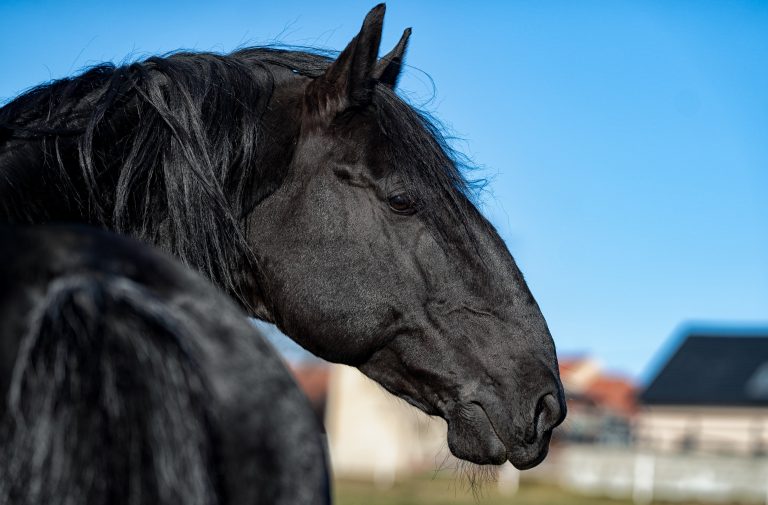
History
The Kladruber horse, owing to its more than 450 years long breeding history, is among the oldest horse breeds in the world.

A decree establishing an imperial stud in Kladruby nad Labem was issued on 24th April 1579 by Emperor Rudolf II. The original mission of the stud was to produce horses to fulfill the needs of the Imperial Court ceremonials and for military purposes. At the behest of Rudolf II, Spanish horses were imported and a new breed Equus Bohemicus – Czech Horse – Old Kladruber was created. The attribute “Bohemicus”, labelling a new separate breed, is mentioned in hippology books as early as the 17th century.
By the end of the 18th and the beginning of 19th century, the breed was further crossbred with Italian horses.
Unfortunately, a fire from in 1757 destroyed the first 200 years of breeding records. However, the documentation has been well-preserved ever since.
Grey variety of the Old Kladruber became a symbol of aristocracy, whereas the blacks were used by high-ranking church officials.
A critical moment in breeding the Kladruber horse came after the end of the Habsburg monarchy, with the creation of the independent state of Czechoslovakia in 1918. A lot of people saw the horses as a symbol of the old monarchy; thus, they became old-fashioned and no longer needed. The continuity of their breeding was seriously endangered. Moreover, due to limited financial aid from the state, it was decided that only the greys would be allowed to continue breeding.
The rescue of black horses is mainly attributed to Prof. František Bílek, who devised a black Kladruber regeneration project: assembling three brothers of the Sacramoso line, eight black Kladruber mares and other mares with a share of Kladruber blood. To re-establish the black horses, grey Kladruber mares and Lipizzaner mares were used; furthermore, for example a black Lipizzaner Siglavi Pakra, who established a new blood line, was used too, as well as Friesian horses. The black Old Kladruber was then relocated to Slatiňany Stud.
Between the years 1974-1985, a Friesian stallion Romke was stationed in the Slatiňany Stud. His purpose was to extend the gene pool, enlarge the body frame and pass on his black colour with no markings. Another new line was derived from a black Lipizzaner stallion Siglavi Pakra.
40 years of the Kladruber restoration works came to an end in 1975. Since then the horse breed is in a phase of sustained breeding.
Nowadays, the black Kladruber follows four sire lines – Solo, Sacramoso, Siglavi Pakra and Romke. The Italian line of Napoleone ceased to exist in 1922 when the Kladruber herd was almost decimated.
The Old Kladruber is a native Czech horse breed, whose significance goes far beyond the borders of the Czech Republic. At the same time, considering the low numbers of individuals of this breed, it is an endangered horse breed. The Kladruber horse became part of The National Programme on Conservation and Utilization of Plant, Animal and Microbial Genetic Resources Important for Food and Agriculture and is supported by the Ministry of Agriculture of the Czech Republic.
The Kladruber population in recent years remains stable and unchanging. As of December 31, 2018, there are 55 studs (24 grey, 31 black) and 539 broodmares (264 grey, 275 black) living all over the world. Out of these totals, 53 studs (22 grey, 31 black) and 349 broodmares (159 grey, 190 black) are included in the genetic resources of the Old Kladruber horse.
In 1995, the National Stud Kladruby nad Labem as well as the Kladruber horse was designated a Czech National Historic Landmark.
Since 1996 the Kladruber population has been closed to any additional new blood from other horse breeds.
